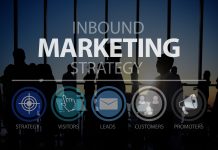Any business operation relies on good data. You need well-researched data to get the results you desire, whether it’s for content production, advertising, or audience targeting.
A lead is the smallest unit of data in lead generating. In most cases, though, you’ll have a large number of leads that need to be grouped together to create data lists. Companies of a certain size, in a certain location, employing a specific technology, contacts with a specific title, or in specific divisions are frequently grouped together.
What is a B2B sales lead?
Consider a sales lead to be a potential client’s business card: It contains basic information about the person, such as contact information, location, job title, or industry, but it can also include more particular information, such as sales requirements.
The specifications of an ideal customer profile (ICP) and a buyer persona are used to find leads (BP). The more accurate your leads are, the more likely they are to be converted into genuine clients by your salespeople.
Because you never get just one lead, you’ll need to combine them together, and data lists are the most common way to do so.
What is a data list?
If you provide software to medical organizations, for example, your ideal customer might be a hospital with more than one hundred staff in a specific region. Following your research, you’ll be given a list of all qualified leads who fulfill the description within the parameters you’ve chosen.
A data list, on the other hand, is most accurate when it’s new. If you utilize the same list a year later, though, there’s a good risk that many of the leads will be invalid owing to outdated information.
Lists typically degrade at a rate of 2% to 5% every month, with enormous variations per industry— retail has the highest turnover rate. Job changes, labor force participation, leave of absence, and death rates all contribute to this. The typical lead list (which may have been 90% accurate at the time of purchase) is only half correct one year later, thanks to a 3% average decay rate.
This trend holds true for data in your customer relationship management (CRM) system that hasn’t been audited or enriched. There are data audiences that can help with these issues.
What is a data audience?
The word “dynamic” is the most important component here. Data audience is similar to a database in that it is continually evolving and weeding out false leads. Although this phrase is new, it has several advantages over data lists.
Audiences are given this moniker since they are produced on the fly and are updated on a regular basis as a result of usage. The basic idea is that the most effective technique to authenticate a contact record is to consume it. Simply said, the easiest way to check if a phone number is valid is to call it; the best way to check if an email address is valid is to send an email, and so on.
Data Audience vs. Data Lists
Due to the prevalent practice of selling a single data list to various companies, data lists have received some unfavorable attention in the recent decade. Money is squandered, emails are sent as SPAM, and there is a general lack of trust in purchasing data sets.
A data list, on the other hand, is not a negative thing. You can use the parameters straight immediately to reach out to ideal clients if the quality of the lead components is excellent and the study was done specifically for your organization.
The disadvantage is that you’ll have to invest in updating the list or buying a new one in the future. And you’ll have to repeat the process over and over.
On the other hand, the concept of data audience is a better investment.
The term “audience” does not refer to a random group of people. An audience is analogous to a room full of people who paid for tickets to watch you, whereas a list is more like a static piece of information. They are interested in learning more and may become customers. And you’ll be notified if some of them lose their potential over time or if the variables in their profiles alter. They will depart the room, and other visitors who are interested will enter.
This is how the data audience works in general: It’s a contact database that matches your ICP. It filters out the ones that are no longer relevant and refreshes them over time.








